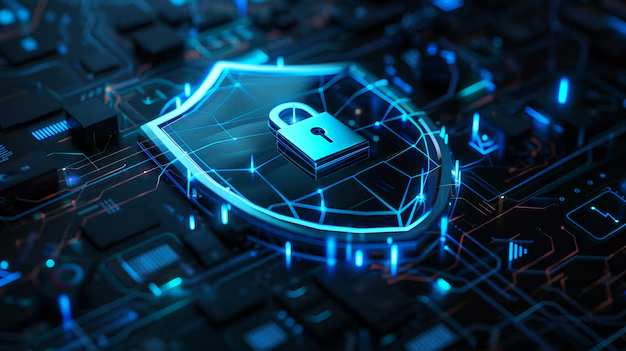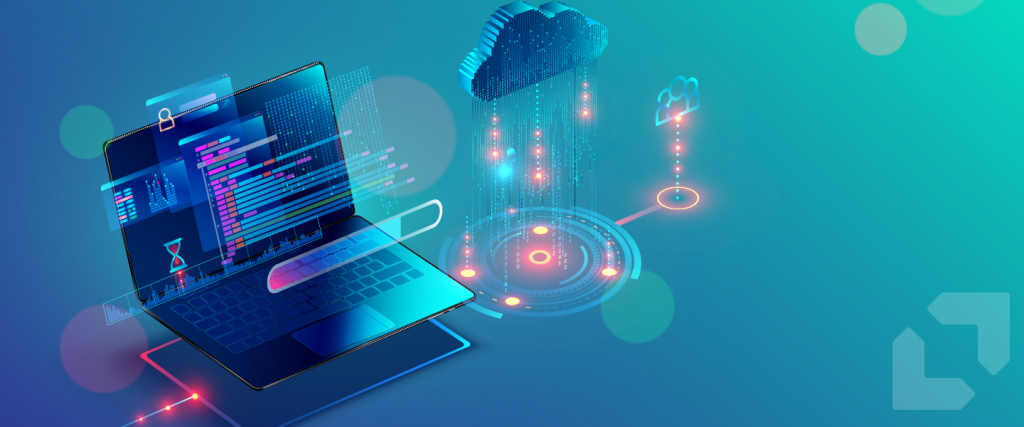
In today’s digital world, cybersecurity has become more critical than ever. With the rise of cyber threats, data breaches, and increasingly sophisticated attacks, businesses and individuals must stay ahead of the curve to protect sensitive information. The solution? AI-powered cybersecurity.
Artificial intelligence (AI) is transforming how we approach cybersecurity. By leveraging AI and machine learning, security systems can predict, detect, and respond to threats with remarkable speed and accuracy, far beyond what traditional methods can achieve. In 2025, AI will not just be an added layer of protection — it will be the cornerstone of effective cybersecurity strategies.
In this blog, we will explore the latest trends in AI-powered cybersecurity, along with best practices that organizations can adopt to stay secure in an ever-evolving threat landscape.
Why AI is the Future of Cybersecurity
Cybersecurity faces numerous challenges in the modern age. Traditional systems, though effective in many cases, often struggle with the volume, speed, and complexity of modern cyberattacks. Cybercriminals are using AI themselves, making the threat environment even more advanced and dynamic.
AI-powered cybersecurity is well-suited to address these challenges for several reasons:
- Speed and Efficiency: AI can process vast amounts of data in real-time, identifying patterns and anomalies much faster than human analysts.
- Predictive Capabilities: With machine learning, AI can predict potential threats based on historical data and evolving attack strategies.
- Automated Response: AI can automatically respond to detected threats, reducing the time between detection and response.
- Continuous Learning: AI systems learn and evolve as new data is introduced, improving their ability to detect and respond to threats over time.
In 2025, AI will play a key role in combating sophisticated cyber threats, providing proactive, automated defenses that were previously impossible.
Top Trends in AI-Powered Cybersecurity in 2025
1. AI-Driven Threat Detection and Prevention
Traditional threat detection systems often rely on signature-based detection, which can only recognize known threats. However, as cybercriminals use novel tactics, signature-based systems can miss many attacks. AI-powered threat detection addresses this issue by analyzing patterns of behavior and identifying anomalies that might indicate an attack.
AI can process data from various sources such as network traffic, endpoints, and cloud services, spotting suspicious activity faster and more accurately. As deep learning and reinforcement learning models become more advanced, they will be able to identify even the most subtle indicators of malicious behavior.
2. Automated Incident Response and Orchestration
When a cyberattack occurs, response time is crucial. A delayed response can result in data loss, system downtime, and significant financial damage. AI-powered cybersecurity tools can automate many aspects of incident response, from identifying the attack to mitigating the damage.
In 2025, security systems will be able to not only detect and alert security teams but also respond autonomously to threats. This could include actions like isolating compromised devices, blocking malicious IP addresses, and triggering specific countermeasures without waiting for human intervention.
Security Orchestration, Automation, and Response (SOAR) platforms will become even more widespread, combining AI with automated workflows to improve security response efficiency.
3. Behavioral Biometrics for Authentication
Traditional passwords and multi-factor authentication (MFA) methods are increasingly seen as vulnerable to phishing and social engineering attacks. In 2025, AI will play a major role in behavioral biometrics — an advanced form of user authentication that evaluates user behavior patterns to verify identity.
By analyzing unique aspects of user behavior, such as typing speed, mouse movements, and even how a person holds their phone, AI can identify and authenticate users more securely than traditional methods. This continuous authentication ensures that users remain authenticated throughout their session, significantly reducing the risk of unauthorized access.
4. AI for Cyber Threat Intelligence
Threat intelligence refers to the information that helps organizations understand the tactics, techniques, and procedures (TTPs) used by cybercriminals. AI-powered systems are increasingly being used to collect and analyze threat intelligence in real-time. These systems can process massive amounts of structured and unstructured data to identify emerging threats, new attack vectors, and indicators of compromise (IOCs).
In 2025, organizations will rely more heavily on AI-based threat intelligence platforms to continuously update their defenses. AI will not only help predict future attack trends but also allow cybersecurity teams to proactively fortify their defenses against potential threats.
5. AI and Cloud Security
As businesses continue to migrate to cloud environments, cloud security will become an even greater priority. AI will be instrumental in securing cloud infrastructures, both public and private, by monitoring cloud-based applications, detecting unusual activity, and ensuring compliance with regulatory frameworks.
Cloud-native security tools, such as AI-powered firewalls and AI-driven vulnerability scanning, will become standard in 2025. These tools can identify configuration errors, misused privileges, and other vulnerabilities within cloud services before they can be exploited.
Best Practices for Implementing AI in Cybersecurity
While AI promises to revolutionize cybersecurity, its implementation must be done carefully to ensure effectiveness. Below are some best practices for leveraging AI-powered cybersecurity tools in 2025:
1. Integrate AI with Existing Security Infrastructure
Rather than replacing existing security systems, AI should be integrated into your current security framework. This will enable a hybrid approach where AI-powered tools can work alongside traditional security measures, enhancing overall effectiveness.
For example, you can integrate AI-based intrusion detection systems (IDS) with your existing firewalls and endpoint protection to provide a multi-layered defense. This will help mitigate the risks of blind spots and ensure your systems are thoroughly protected.
2. Continuous Monitoring and Adaptation
AI models improve with exposure to new data, which means they need to be continuously trained and adapted to the evolving threat landscape. It’s essential to feed your AI-powered cybersecurity systems with fresh data from various sources, such as network traffic, endpoint logs, and threat intelligence feeds.
Make sure your AI models are updated regularly to account for new attack techniques and patterns, ensuring they can detect and respond to emerging threats.
3. Maintain Transparency and Human Oversight
While AI can automate many aspects of cybersecurity, human oversight remains essential. It’s important to ensure that AI systems are transparent and interpretable, so security teams can understand how decisions are being made.
Incorporate explainable AI (XAI) into your security operations, so your teams can track and validate AI-driven decisions. Having human experts involved ensures that AI systems are acting in line with your organization’s goals and compliance requirements.
4. Data Privacy and Security
AI systems rely heavily on data, and the more data they have, the better they perform. However, this also raises concerns around data privacy and security. When implementing AI-powered cybersecurity systems, it’s essential to ensure that data is handled securely and in compliance with privacy regulations, such as GDPR and CCPA.
Consider using techniques like differential privacy and data anonymization to protect sensitive information during the AI training process.
5. Collaboration Across Teams
AI-powered cybersecurity solutions require collaboration between security teams, IT departments, and data scientists. Cross-functional teams can help ensure the AI models are optimized for both technical accuracy and operational relevance.
By encouraging collaboration and shared knowledge, organizations can ensure that their AI-based systems are both secure and effective in responding to threats.
Conclusion: The Future of AI in Cybersecurity
AI-powered cybersecurity is not a futuristic concept — it’s already making waves and will only continue to grow in importance as we move into 2025 and beyond. With AI, organizations can move from a reactive to a proactive stance, identifying and addressing threats in real-time, often before they can cause significant harm.
As AI-driven tools become more intelligent and sophisticated, they will be central to defending against increasingly complex cyberattacks. However, to reap the full benefits, organizations must take a strategic, integrated approach, ensuring transparency, continuous monitoring, and data security.
By embracing these AI-driven trends and best practices, organizations can build a robust defense strategy that not only protects against today’s threats but is also prepared for the unknown challenges of tomorrow.


Leave a Reply